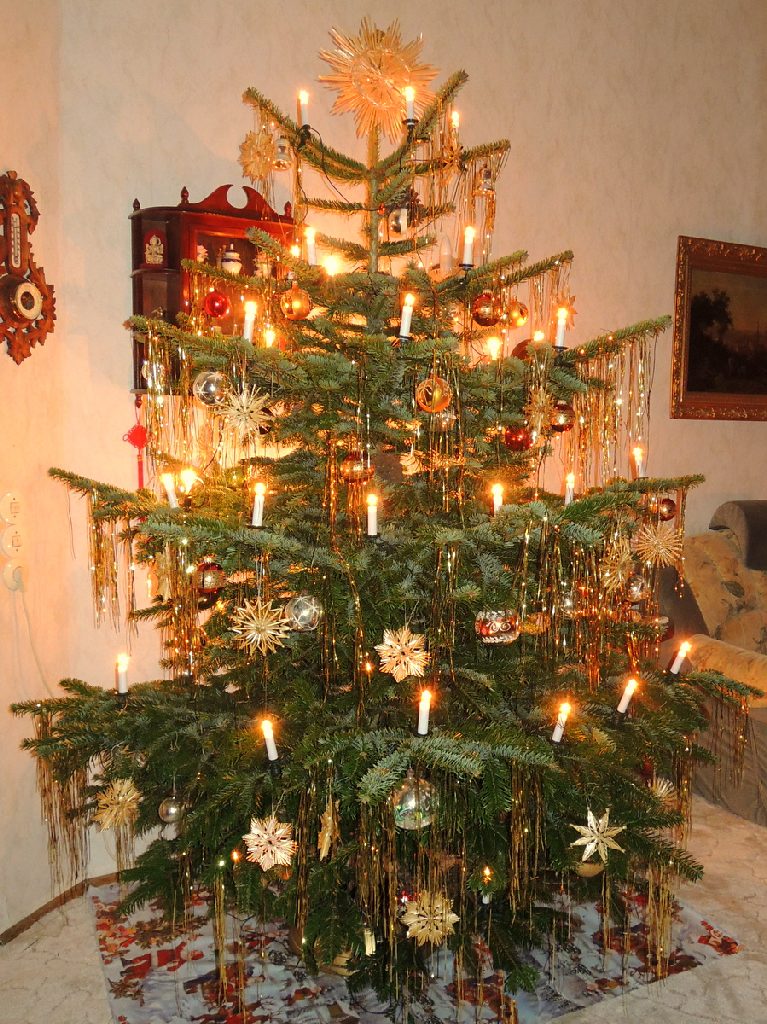
Christmas trees have become a beloved tradition in many countries around the world, but their origins can be traced back to 16th-century Germany. The evergreen fir tree was seen as a symbol of life and hope during the cold and dark winter months. Over time, the tradition of decorating Christmas trees has evolved, and many unique customs have developed in Germany. In this article, we'll delve into the fascinating history and traditions behind German Christmas trees.
Origins of the German Christmas Tree Tradition

The modern Christmas tree tradition is often attributed to 16th-century Germany, specifically to the Protestant reformer Martin Luther. According to legend, Luther was walking through a forest on a snowy evening and was struck by the beauty of the stars shining through the branches of the fir trees. He took a small fir tree home and decorated it with candles to recreate the effect for his children.
The Role of Prince Albert in Popularizing the Tradition
Prince Albert, the German-born husband of Queen Victoria of England, played a significant role in popularizing the Christmas tree tradition throughout Europe and beyond. In 1841, Albert brought the custom to the British court, and it soon spread to wealthy households across the continent. The Illustrated London News published a drawing of the royal family around a decorated Christmas tree in 1848, which helped to further popularize the tradition.
The Tradition of Decorating Christmas Trees in Germany

In Germany, Christmas trees are typically decorated with a combination of traditional and modern ornaments. Glassblown balls, tinsel, and garlands are popular decorations, as well as handmade ornaments such as straw stars and wooden figures. The tree is usually topped with a star or an angel, symbolizing the Star of Bethlehem or the angel Gabriel.
The Significance of Candles on German Christmas Trees
Candles have played a significant role in German Christmas tree traditions since the early days. Initially, candles were the primary source of light on the tree, but with the advent of electric lights, they have become more of a symbolic decoration. Many Germans still use real candles on their trees, often in combination with electric lights. The soft glow of the candles is meant to represent the light of Christ and the hope of eternal life.
Christmas Tree Traditions in German Culture

Christmas trees are an integral part of German culture and are often at the center of festive gatherings and celebrations. In many German towns, a large Christmas tree is erected in the town square, and locals gather around it to sing carols and enjoy festive treats. The Christmas tree is also a popular motif in German literature, music, and art, symbolizing the country's rich cultural heritage.
The Tradition of Christmas Tree Lotteries in Germany
In some parts of Germany, especially in the southern region of Bavaria, it's common to hold Christmas tree lotteries. Participants buy tickets, and the winner gets to take home a decorated Christmas tree. This tradition is often organized by local charities or community groups, with the proceeds going towards a good cause.
Modern German Christmas Tree Traditions

In recent years, modern German Christmas tree traditions have evolved to incorporate eco-friendly and sustainable practices. Many Germans opt for living trees, which can be planted in the garden after the festive season. Others choose to rent a Christmas tree, which is then returned to the farm after the holidays. This shift towards sustainable Christmas tree traditions reflects Germany's strong environmental ethos.
The Rise of Alternative Christmas Trees in Germany
In recent years, alternative Christmas trees have gained popularity in Germany. Some people opt for cardboard or wooden trees, while others choose to decorate a branch or a potted plant. This trend is driven by concerns about the environmental impact of traditional Christmas trees, as well as a desire for more creative and unique decorations.
Conclusion
German Christmas tree traditions are a fascinating blend of history, culture, and symbolism. From the origins of the tradition in 16th-century Germany to the modern-day focus on sustainability, the Christmas tree remains a beloved and integral part of German festive celebrations. Whether you're looking to learn more about German culture or simply want to explore the traditions behind the Christmas tree, this article has provided a comprehensive guide to the fascinating world of German Christmas trees.




What is the origin of the German Christmas tree tradition?
+The modern Christmas tree tradition is often attributed to 16th-century Germany, specifically to the Protestant reformer Martin Luther.
What is the significance of candles on German Christmas trees?
+Candles have played a significant role in German Christmas tree traditions since the early days, symbolizing the light of Christ and the hope of eternal life.
What is the modern trend in German Christmas tree traditions?
+In recent years, modern German Christmas tree traditions have evolved to incorporate eco-friendly and sustainable practices, such as living trees and cardboard trees.






![Christmas In Germany [Its Traditions And Celebrations]](https://www.simplegermany.com/wp-content/uploads/2020/09/Real-German-Christmas-Tree.jpg)




